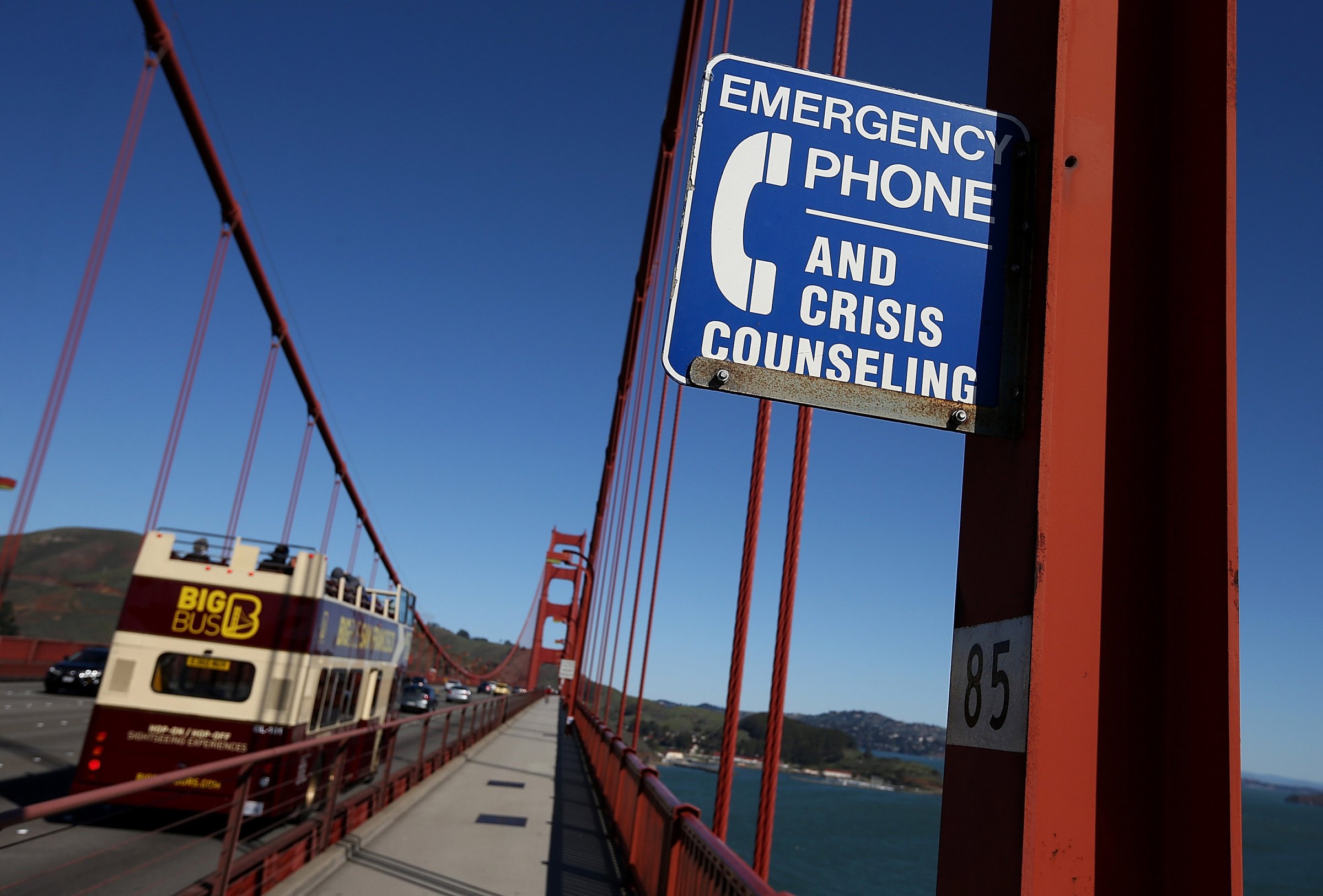
For more than six decades, Californians have resisted the idea of adding barriers to the iconic Golden Gate Bridge to prevent suicide. Now, after a record 46 deaths in 2013, the authority that oversees the bridge are expected to reverse course. But will this simply divert those drawn to the most popular suicide spot in the U.S. to other bridges or methods?
The research in the area is surprisingly clear, at least on this count. Although nearly 40,000 Americans die from suicide every year—a death toll similar to that from unintentional overdose and car accidents—most suicide attempts that are foiled are not repeated. The majority of suicides are committed on impulse.
Kevin Hines, who survived an attempt 13 years ago, immediately regretted hurdling himself over a railing of the Golden Gate Bridge. In the short amount of time it took him to hit the water, Hines had already changed his mind and positioned himself to try and survive the fall. He shattered two of his lower vertebrae, but lived to tell about it.
A 1977 study [PDF] found that 94% of the 515 people who were stopped from leaping from the Golden Gate between 1937 and 1971 were still alive, an average of 26 years later.
And that isn’t the only data suggesting that deterring suicide by one means doesn’t merely shift people to another. Studies [PDF] of bridge barriers from Maine to New Zealand find that installing them is linked with a reduction in deaths, while removing them increases mortality.
Moreover, the same holds true for other methods. Research from Sri Lanka, where a common means of committing suicide is ingesting pesticides, found that after the most toxic pesticides were restricted in the mid ‘90s, the suicide rate was cut in half within 10 years. A similar drop in suicide was seen in Great Britain when carbon monoxide was removed from the gas used in cooking, preventing people from taking their lives the way poet Sylvia Plath infamously did, by sticking her head in the oven.
Although it’s commonly believed that rumination and suicidal thinking occur long before people actually try it, a study of people who made nearly fatal attempts found that a quarter had only thought about suicide for five minutes before trying it, and nearly 90% had deliberated for just eight hours or less.
This is why guns are strongly linked to suicide: they make the odds that a passing impulse will be deadly much higher, and account for nearly half of all suicide deaths. Unlike deliberate overdose attempts, which are fatal only around 3% of the time, guns kill 85% of those who use them to attempt suicide.
As a result, states with higher rates of gun ownership have gun-associated suicide rates that are four times higher in men and eight times higher in women, while rates of suicides by other means are no different, according to a 2007 study.
The link to impulsivity may be one reason that suicidal thinking is relatively common but suicide itself is far more rare, and predicting who is at highest risk is difficult. Nearly 4% of those over age 18 reported thoughts of suicide in the past year, according to the CDC, and 10-20% of teens say they have considered suicide over the course of their lifetimes. But only around half a percent of adults and 2% of youth annually report actually having made an attempt. Obviously, those who are there to report having made an attempt did not succeed.
Tad Friend, writing in The New Yorker in 2003, when California was resisting adding a barrier to the Golden Gate, put it this way:
[T]o build one would be to acknowledge that we do not understand each other; to acknowledge that much of life is lived on the chord, on the far side of the railing. Joseph Strauss [the chief engineer who designed the bridge] believed that the Golden Gate would demonstrate man’s control over nature, and so it did. No engineer, however, has discovered a way to control the wildness within.
Now, however, at least a few more souls will be saved from desperate impulses—and a few more families spared the incomparable heartache and loss that death by suicide brings to loved ones.
More Must-Reads From TIME
- The 100 Most Influential People of 2024
- How Far Trump Would Go
- Scenes From Pro-Palestinian Encampments Across U.S. Universities
- Saving Seconds Is Better Than Hours
- Why Your Breakfast Should Start with a Vegetable
- 6 Compliments That Land Every Time
- Welcome to the Golden Age of Ryan Gosling
- Want Weekly Recs on What to Watch, Read, and More? Sign Up for Worth Your Time
Contact us at letters@time.com